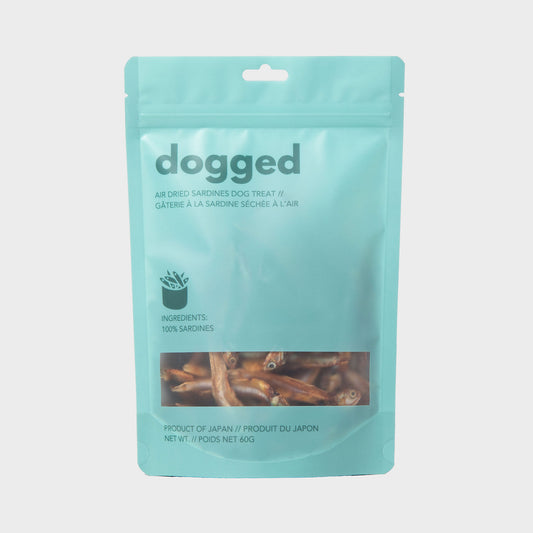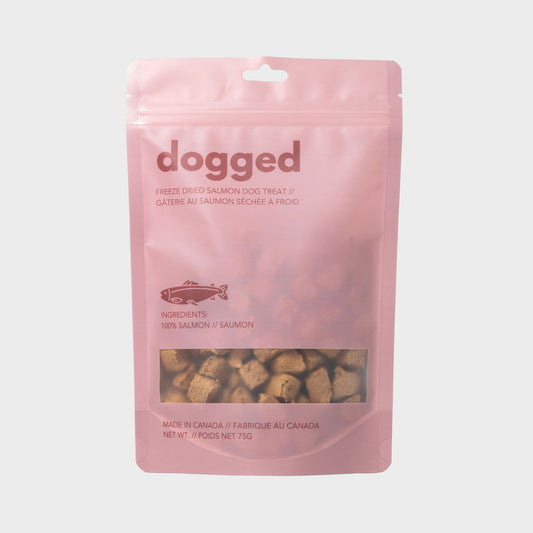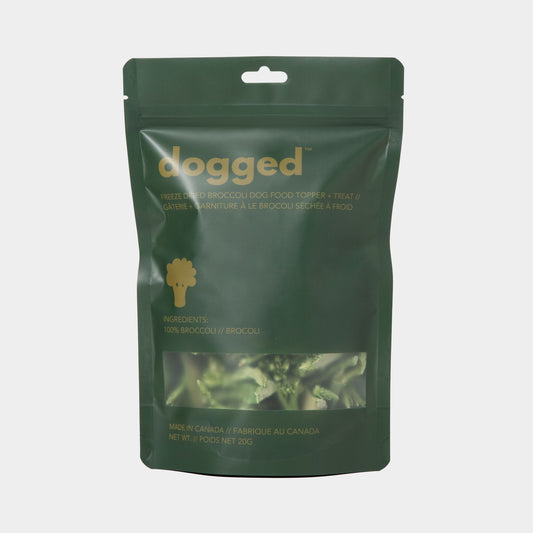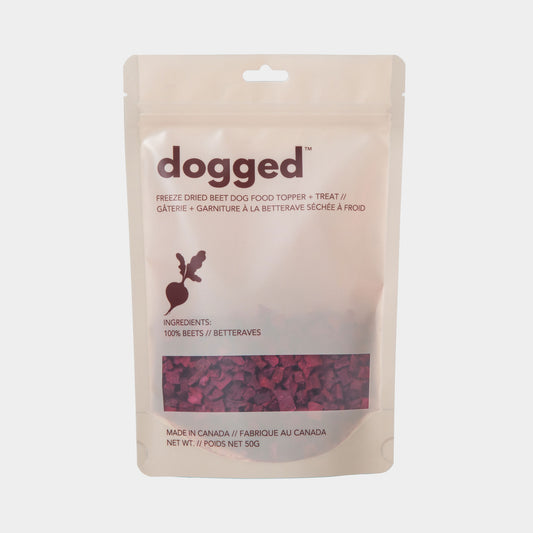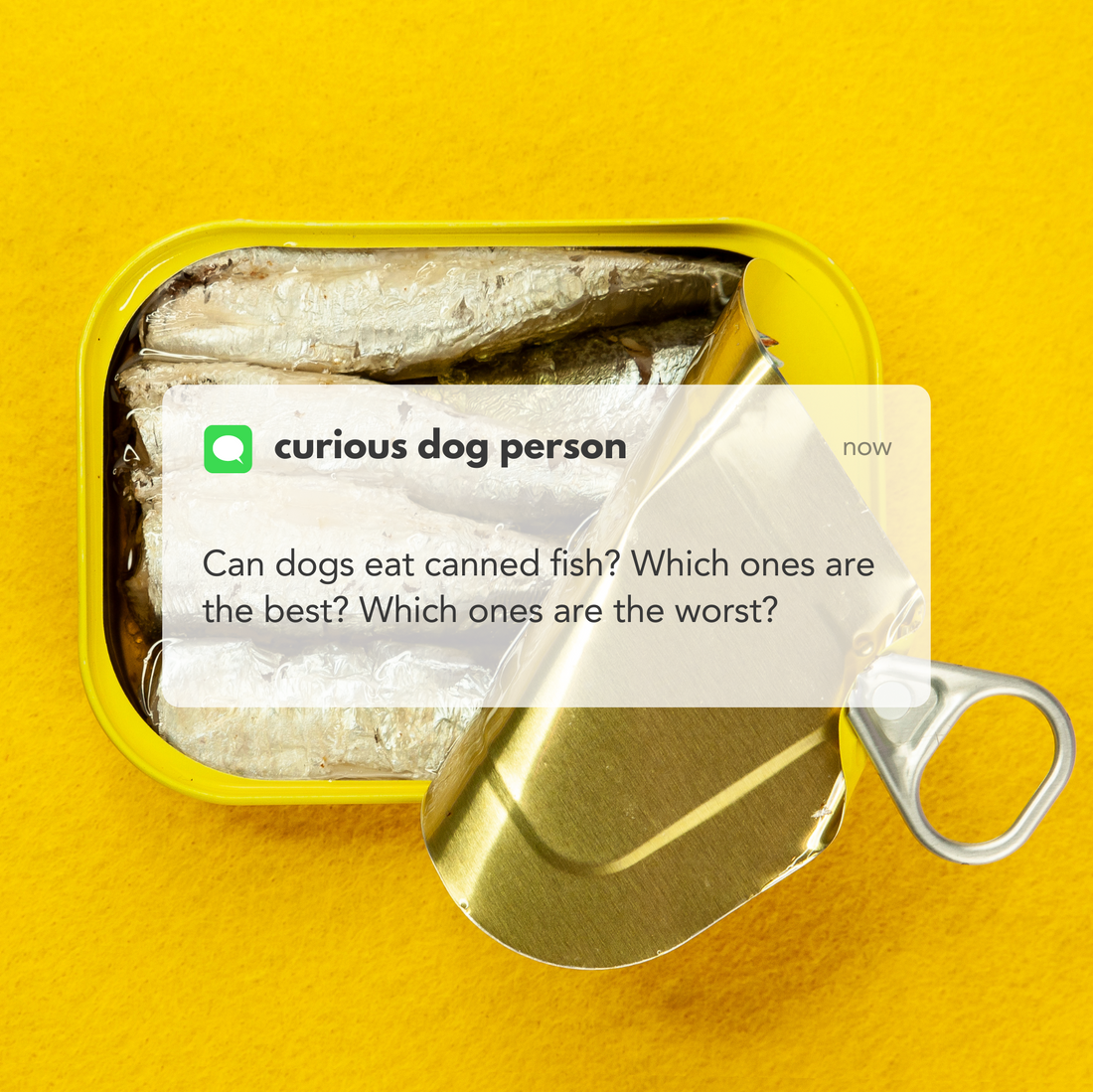
The Best Types of Canned Fish for Your Dog: Benefits and Considerations Ranking from Best to Worst
Can dogs eat canned fish? Which ones are the best?
At dogged, we’re always on the lookout for the best ways to nourish your pup, and canned fish is a fantastic option to add to their diet. Packed with essential nutrients like omega-3 fatty acids, protein, and vitamins, canned fish can provide a healthy boost to your dog’s overall well-being. But not all canned fish are created equal, and there are some things to consider before making it a regular part of your dog’s diet. Here’s a rundown of the best types of canned fish to include in your dog’s diet, along with the pros and cons. Here is our list from best to worst!
1. Sardines
- Why Sardines?
- Sardines are small, oily fish that are rich in omega-3 fatty acids, which are great for your dog’s skin, coat, and joints. They are also low in mercury, making them a safer option compared to larger fish. Sardines are packed with protein, calcium, and vitamins D and B12.
- Considerations
- High Fat Content: While the fats in sardines are healthy, they are still calorie-dense, so feeding too many could contribute to weight gain, especially in less active dogs.
- How to Serve
- Look for canned sardines in water without added salt. Serve a few whole sardines as a topper on your dog’s regular food, or mix them in for a nutrient boost.
2. Salmon
- Why Salmon?
- Salmon is another excellent source of omega-3 fatty acids and is known for its anti-inflammatory properties. It can help with joint pain, boost the immune system, and promote a healthy coat. Salmon also contains high levels of protein, vitamins, and minerals like selenium.
- Considerations
- Mercury and Pollutants: While salmon is generally safe, it can contain trace amounts of mercury and other pollutants like PCBs, especially if sourced from non-wild or farmed salmon. Always check the source and limit the frequency of feeding.
- How to Serve
- Choose canned salmon that is packed in water with no added salt or seasonings. Flake the salmon and mix it into your dog’s food or serve it as a special treat.
3. Mackerel
- Why Mackerel?
- Mackerel is a nutrient-dense fish that’s loaded with omega-3s, vitamin D, and B vitamins. It’s a great option for promoting heart health, reducing inflammation, and supporting brain function in dogs.
- Considerations
- High Sodium Levels: Some canned mackerel varieties might be high in sodium, so it’s crucial to choose unsalted options. Excess sodium can lead to health issues like hypertension and kidney problems in dogs.
- How to Serve
- Opt for canned mackerel in water with no added salt. Like other canned fish, it can be served whole or flaked and mixed into your dog’s meals.

4. Anchovies
- Why Anchovies?
- Anchovies are small, oily fish that, like sardines, are rich in omega-3 fatty acids and low in mercury. They’re also high in calcium and protein, making them a nutritious addition to your dog’s diet.
- Considerations
- Sodium Content: Much like mackerel, anchovies can sometimes be packed with added salt, which isn’t good for your dog. Always check the label for no-salt-added varieties.
- How to Serve
- Look for canned anchovies in water with no added salt. Given their small size, you can easily add whole anchovies to your dog’s food.

5. Tuna (in Moderation)
- Why Tuna?
- Tuna is high in protein and contains omega-3 fatty acids, but it should be given in moderation due to its higher mercury content compared to smaller fish. Tuna is best used as an occasional treat rather than a regular part of your dog’s diet.
- Considerations
- Mercury Levels: Tuna is one of the larger fish that can accumulate higher levels of mercury. Regular consumption can lead to mercury poisoning, so it’s important to limit your dog’s intake to small, infrequent portions.
- How to Serve
- Choose canned light tuna in water with no added salt. Serve small amounts mixed with your dog’s regular food.

General Considerations
- Avoid Added Salt and Seasonings: Always choose canned fish that is packed in water and free of added salt, oils, or seasonings. These additives can be harmful to dogs.
- Check for Bones: Some canned fish may contain small bones, which are usually soft and safe for dogs to eat. However, always check the fish and remove any hard or sharp bones to prevent choking hazards.
- Mercury and Contaminants: While canned fish like sardines and anchovies are lower in mercury, it’s important to vary your dog’s diet to avoid potential buildup of toxins.
- Moderation is Key: While canned fish can be a healthy addition to your dog’s diet, it should be given in moderation. Too much fish can lead to an imbalance of nutrients, so it’s best to serve it as an occasional treat or supplement.
Final Thoughts
Incorporating canned fish into your dog’s diet can provide numerous health benefits, from improved skin and coat to better joint health. However, it’s essential to be mindful of the type, quality, and quantity of fish you’re feeding. At dogged, we’re all about keeping your pup healthy and happy, and adding the right types of canned fish to their meals is a simple way to do just that. Have questions about what’s best for your dog? Reach out to us—we’re here to help!

